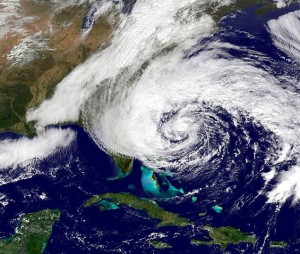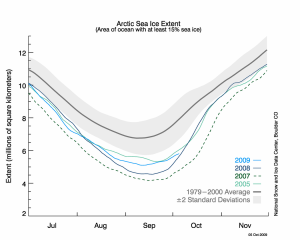
The Deepwater Horizon spill. Sunday, June 13, 2010, AP Photo/Dave Martin
Part 6 in a Series that began after Earth Day (1 Fossil Fuels and a Walk on the Moon, 2 Drill Baby Drill or Drill Baby Oops, 3 The Magnitude, 4 One Month After, 5 Like Chernobyl?)
Last month I wrote on Popoular Logistics “BP and the government say … 5,000 barrels per day is reaching the surface and most of the oil – 80% to 90% – is below the surface. So I think it’s on the order of 25,000 to 50,000 barrels per day.” (click here)
This was a “back of the envelope” reflection of NPR’s analysis, reported May 14 (click here) that the spill was 70,000 barrels per day, with a margin of error of 14,000 barrels – so maybe as low as 56,000 Barrels per Day and maybe as much as 84,000 Barrels per Day.
In their article “Deepwater Horizon round up: it’s worse than you think (again) – June 11, 2010,” Nature.com noted “At the end of May the official estimate was raised again to between 12,000 and 19,000 barrels day. Now the Flow Rate Technical Group has produced a bevy of new estimates ranging from 25,000 to 40,000. Crucially, legal liability established for a spill can be linked to its size.” (click here) and here for the Flow Rate Technical Group.
It looks like I’m in good company. But I’d prefer to be wrong.
I also note that this is “business as usual” for BP and other fossil fuel companies, and compared it to the accident at the Kingston Steam Plant, 12/22/08, the Upper Big Branch Mine, 4/5/10, the Exxon Valdez, and Chevron-Texaco’s alleged dumping of 18 BILLION Gallons
of oil process waste in Ecuador between 1964 and 1990 (click here).
It is obvious to me that we MUST move to a post-carbon economy.
- 100 gigawatts – offshore wind, $300 Billion
- 100 gigawatts – land based wind $200 Billion
- 50 gigawatts – solar $200 Billion (price is going down)
- 50 gigawatts – marine current – $200 Billion.
- Clean Energy Infrastructure: $900 Billion.
- Save the World: Priceless.
Emergency phone numbers.
* Report oiled shoreline or request volunteer information: (866) 448-5816
* Submit alternative response technology, services or products: (281) 366-5511
* Submit your vessel for the Vessel of Opportunity Program: (281) 366-5511
* Submit a claim for damages: (800) 440-0858
* Report oiled wildlife: (866) 557-1401
* Medical support hotline: (888) 623-0287
The Series, following “Earth Day for the Future”
(Here)
- Fossil Fuels and a Walk on the Moon (Here)
- Drill Baby, Drill – or Drill Baby, Oops (Here)
- The Magnitude of the Deepwater Horizon Spill (Here)
- One Month After The Spill BP Siphoning 3,000 Barrels Per Day (Here)
- Deepwater Horizon – the Chernobyl of Deep Water Drilling? (Here)
- Deepwater Horizon: 40,000 Barrels Per Day or 70,000? (Here)


